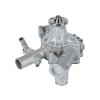
China’s foreign exchange reserves, which stood at $3.5tn in October, have been a source of national pride and a bulwark against adverse financial conditions.
The internationalisation of the renminbi means, however, that Chinese exporters and importers increasingly can send and receive payments in renminbi, rather than US dollars.
China is the world’s largest exporter, and big trade surpluses over the last decade have fuelled the rise of China’s forex reserves. Now, some are worried that dwindling US dollar export earnings, twinned with capital outflows from China, could result in a drop in China’s forex reserves and with it slumping demand for US Treasury debt.
Use of the renminbi for trade settlement has grown rapidly since 2010. According to central bank data, he renminbi was used for 24 per cent of China’s current account transactions, or Rmb5.5tn, in the first nine months of this year, up from only 8 per cent in 2011. China’s central bank governor, Zhou Xiaochuan, has said he wants the ratio to exceed one-third by 2020.
Determining how important renminbi trade settlement is to China’s foreign exchange reserves, however, requires understanding the direction of renminbi payment flows.
If most renminbi trade settlement consists of overseas companies using renminbi instead of US dollars to pay for Chinese goods, that would lead to slower accumulation or even an outright decline in forex reserves, as the renminbi replaces the US dollar in China’s inbound money flows.
If, on the other hand, it is Chinese companies using renminbi to pay for imported goods, the opposite would occur: forex reserves would swell faster as renminbi replace dollars for outbound payments.
Between 2010, when renminbi trade settlement began, and 2014 outbound renminbi payments heavily outweighed inbound renminbi receipts. This imbalance peaked in early 2014, when payments exceeded receipts by a ratio of more than two to one, according to central bank data. In 2014, the gap narrowed to 1.4 to one, leading to net renminbi outflows of Rmb1.1tn. based on the average dollar-renminbi exchange rate during 2014, that implies China’s forex reserves grew by $179bn more than they would have before the use of renminbi for trade settlement.
This year, however, the pattern reversed. In the nine months to the end of September, renminbi inflows exceeded outflows by a ratio of 1.2 to 1, leading to a net inflow of Rmb773bn, or a $124bn negative impact on reserves.
The shift is partly due to the depreciation of the renminbi following many years of appreciation. Until the depreciation traders were happy to accept renminbi payments because they could feel reasonably certain they would profit from currency gains.
“Our corporate clients are very sensitive to exchange-rate expectations. They will shift their forex behaviour when they feel the market shifting. Sometimes they’re even quicker than we are,” says a forex dealer at a Chinese bank in Shanghai.
Indeed, after the renminbi surprised the market and fell by 2.4 per cent in 2014, market sentiment shifted. Overseas trading partners no longer wanted renminbi and sought to use trade settlement as a way to offload unwanted renminbi on to Chinese exporters. As the renminbi extended its losses this year, this pattern became entrenched.
Today, analysts are divided about the long-term direction of the renminbi exchange rate. In the medium term, however, China’s persistent trade surplus and fast productivity growth relative to the US suggest room for further appreciation.
Ultimately, however, the impact of renminbi trade settlement on China’s forex reserves may be dwarfed by other factors. For the past decade, trade dominated China’s overall currency flows, while capital controls sharply limited both inbound and outbound investment flows. That is now changing, as China moves to loosen restrictions on currency conversion for investment purposes. Such “capital-account liberalisation” has made it easier for foreigners to invest in China’s onshore equity and bond markets, while Chinese investors have acquired foreign companies and gobbled up real estate in London and Sydney.
This liberalisation — combined with bearish sentiment toward the renminbi and the broader Chinese economy — has led to net investment outflows worth $440bn in the first nine months of this year, including a record outflow in the third quarter, balance of payments data show. Thus, the impact on China’s forex reserves from capital outflows was more than three times larger than the $124bn negative impact on reserves from renminbi trade settlement.
Larry Hu, economist at Macquarie Securities, believes a more market-oriented renminbi exchange rate will promote balance between forex inflows and outflows. “What [the central bank] really wants,” he wrote recently, “is a more volatile renminbi which could deter one-way capital flows.”







